2014 Mitsubishi Mirage Review
From the moment we first laid eyes on the Mirage, we were pessimistic. Forgettable styling, a miniscule engine, a sub-$14k price tag and Mitsubishi’s penchant for low-rent interiors — none of it boded well for the baby Mitsubishi, nor did the fact that the Mirage was originally designed for developing markets like Thailand, where it is built.
FAST FACTS
| 1. A 1.2L 3-cylinder engine makes 74 hp and 74 lb-ft of torque. |
| 2. Fuel economy is 37 MPG city and 44 MPG highway with the CVT, though we managed as high was 46 MPG. |
| 3. A Mirage can be yours for $13,790 including the destination fee. |
And yet point-by-point, the Mirage makes a passable attempt to address all of our concerns.
The Mirage’s body was designed for aerodynamics rather than style. The shape may be plain, but Mitsu has dressed it up with bright paint colors named by their Facebook fans: Plasma Purple, Kiwi Green, Sapphire Blue and Infra-Red. (The less-adventurous can get their Mirage in black, white, gray or silver.) Tall, skinny tires help mask the car’s tiny size, which is underscored by a set of 14-inch wheels. For reference, it’s four-inches longer than a Chevy Spark but a foot shorter than a Honda Fit.
Under the skin, the Mirage makes extensive use of high-strength steel to provide good crash protection with light weight. The front-end structure is bolted on, not welded, which makes for cheaper repairs after a minor collision and, subsequently, lower insurance rates.
INTERIOR: BLAND OR JUST BAD?
The interior is not nearly as dreadful as we feared; the dash is well organized and the plastics from which it is made are no worse than any of the Mirage’s competitors. The door panels are pretty dire, however, with chintzy hard plastic in the places we would have liked to rest our elbows, but the doors themselves shut with a reassuring thunk, although you have to slam them pretty hard to get them to close.
The front seats could use with some improvement. We gave the Mirage a sporting chance by assigning our shortest writer to review it, but even at 5’6″ he found the bottom cushion lacking thigh support and the backrest too stiff. The back seat is a shapeless bench that provides little meaningful support, though legroom is fairly decent.
SEE ALSO: Sub-Compact Car Buyer’s Guide
The Mirage has three seat belts in the back, but anyone thin enough to occupy the middle position could probably fit just as easily into the glovebox. Cargo space is a grocery-bag-friendly 8.3 cubic feet; dropping the split-fold rear seat provides room for suitcases.
HORSEPOWER… WHAT HORSEPOWER?
Open the Mirage’s hood, search around a bit, and you’ll eventually stumble upon the engine, a 1.2-liter 3-cylinder unit so small that it’s almost completely hidden by the air filter box. Output is a mere 74 horsepower and 74 lb-ft of torque; instead of pumping up the power, Mitsubishi has mercilessly pared the Mirage’s weight down to just one ton — 300 lbs less than a Toyota Yaris and 500 lbs lighter than a Honda Fit.
The Mirage can be had with a five-speed manual transmission, but for the best possible fuel economy you’ll need the automatic, which is a continuously-variable transmission. Instead of conventional gears, the CVT uses a pair of variable-diameter pulleys linked by a belt to continuously vary the ratio of engine speed to wheel speed, hence the name. The Mirage’s CVT adds a two-speed gearset, which expands the ratio range and gives the transmission a more positive “kick-down” feel when acceleration is demanded.
Unfortunately, there isn’t much acceleration to demand. In-town scoot is acceptable, but merging onto the freeway is a foot-to-the-floor, heart-in-your-throat affair, with the slow, steady beat of the three-cylinder engine making it feel even slower. (The three-cylinder soundtrack is actually quite pleasing, but we wish the Mirage didn’t play it at the volume of a Metallica concert.)
Once coaxed up to highway speed, the Mirage is content to stay there. We didn’t hear much road noise, probably because it wasn’t loud enough to compete with the rushing of the wind and the roar of the engine.
AMAZING FUEL ECONOMY
The payoff for the Mirage’s glacial acceleration is its outstanding fuel economy. Mitsubishi says the Mirage is the most fuel-efficient non-hybrid gasoline-fueled car in America, with EPA ratings of 37 MPG city and 44 MPG highway with the CVT and 34/42 with the manual. (Fuel economy is the first strike against the manual; the second is the wobbly shifter and the third is the tall first gear, which makes it tricky to get the Mirage moving on a hill. In its favor, the stick-shift version is slightly quicker — or perhaps we should say slightly less slow — and doesn’t vibrate quite so badly at idle as the automatic.)
During our first drive in a CVT-equipped Mirage, which included stop-and-go city traffic, repeated hard acceleration (a term we use loosely in the context of the Mirage), and one ill-conceived but miraculously successful attempt to pass a slow-moving Buick on a two-lane road, we averaged 38 MPG. A later drive, which mixed freeway, urban and suburban roads at a more normal pace — or as close to a normal pace as the Mirage could muster — yielded nearly 46 MPG. And our short stint with the stick-shift in similar conditions yielded 44 MPG. Stupendous!
DRIVES LIKE IT LOOKS
Mitsubishi did not tune the Mirage’s suspension or steering for the US market; instead, we get the same setup engineered for the mean streets of Thailand.
The Thais apparently have a preference for imprecise steering and an overly-soft ride that crashes over bumps, because that’s what the Mirage delivers. Tug the steering wheel even slightly and the Mirage leans like a schooner; it quickly stabilizes and takes a confident set, which you can enjoy for all of a fraction of a second before the anorexically-skinny tires give up what little grip on the pavement they posses.
PRICED TO MOVE
So why would anyone buy a Mitsubishi Mirage? Because it is dirt-freaking-cheap. The Mirage DE costs $13,790 ($12,995 plus a mandatory $795 destination fee) and includes power windows, mirrors and locks, a 4-speaker stereo with a USB port, seven airbags (including one for the driver’s knees), piano-black trim, and — get this — not just air conditioning, but automatic climate control.
A total of $14,990 gets you the ES model, with alloy wheels, a height-adjustable driver’s seat, Bluetooth, cruise control, push-button keyless ignition, a leather-wrapped steering wheel and some extra brightwork to spruce up the cabin. The CVT adds $1,000 to both trim levels, and you can even add navigation and a backup camera to the Mirage ES for $900 more. That brings the price up to $16,890, which is $1,570 less than a similarly-spec’d Nissan Versa. And the whole shootin’ match is covered by a 5 year/60,000 bumper-to-bumper warranty with 10 years/100,000 miles of powertrain coverage.
THE VERDICT
Though it is slow, noisy and miserable to drive, the Mitsubishi Mirage delivers exactly what it promises: Dirt-cheap motoring with decent amenities, new-car reliability and a long warranty. We can’t say we love the Mirage, but we do respect it… and we almost like it.
LOVE IT
- Value-for-money
- Outstanding fuel economy
- Cheap-and-cheerful demeanor
LEAVE IT
- Slow, noisy and unrefined
- Third-world steering and road manners
- Mean seats
More by Aaron Gold




















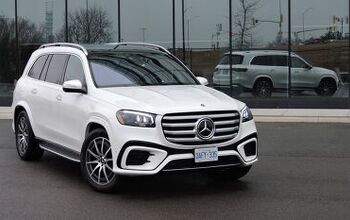
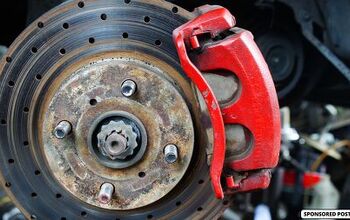




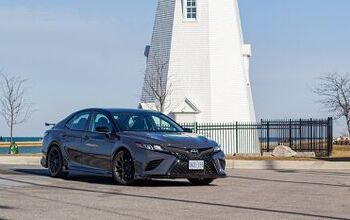
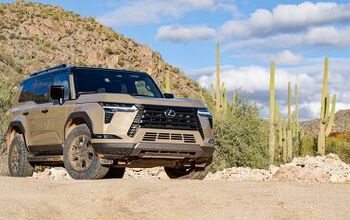

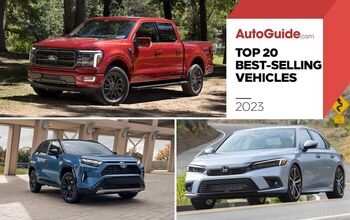
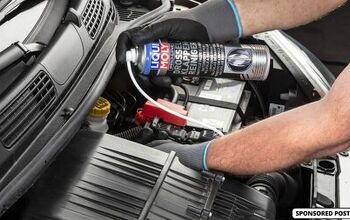
Comments
Join the conversation
Where is the lever to open the hood?
Hmm, similar mpg to a hybrid but without the initial and REPAIR costs of a hybrid which are THOUSANDS for just about everything. The hybrid battery alone is $7500 to replace. No thanks. In the long run, the Mirage is by far the cheapest car to own on the planet AND it looks better than the hybrids!.